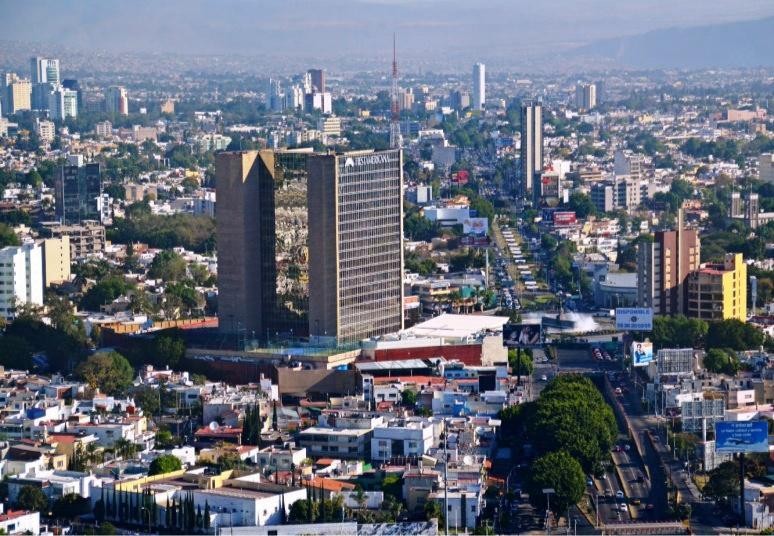By Ruth Hazlewood from the October 2016 Edition
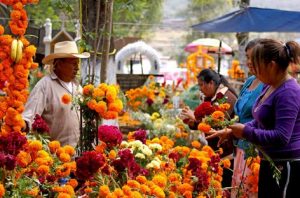 Most of us, when we think of Day of the Dead, think of those elaborate skeleton figures (Catrinas) and perhaps the image of people sitting around gravestones by candlelight, but what is the significance of this tradition in Mexico?
Most of us, when we think of Day of the Dead, think of those elaborate skeleton figures (Catrinas) and perhaps the image of people sitting around gravestones by candlelight, but what is the significance of this tradition in Mexico?
Many different cultures celebrate their dead, and despite the festivities in Mexico now coinciding with All Saints Day and All Souls Day, pre-Hispanic celebrations took place at different times and for differing time periods, depending on the cultural beliefs. There is evidence of such celebrations in the Mayan, Nahua, Totonac and Purépecha cultures existing from pre-Columbian times, and of human skulls having been used in their rituals of death and rebirth.
For such cultures, death was not about being allowed into heaven or banished to hell based upon acts 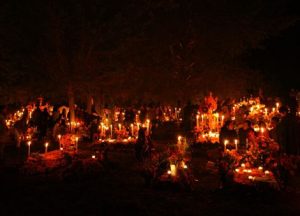 during one’s life; the after life was related to the form of death and its significance within that particular culture. For example, death by sacrifice in the Nahua culture meant that your soul would live on with Huitzilopochtli, the Sun God, as would the souls of women who died during childbirth.
during one’s life; the after life was related to the form of death and its significance within that particular culture. For example, death by sacrifice in the Nahua culture meant that your soul would live on with Huitzilopochtli, the Sun God, as would the souls of women who died during childbirth.
The Spanish colonisation of Mexico in the 16th century not only involved the seeking of the country’s riches, but the con-version of its inhabitants into Catholics and therefore the so called salvation of their souls. The rituals held by the native people for their dead were condemned by the Spanish colonialists and, over time, were modified and adapted to Catholic beliefs.
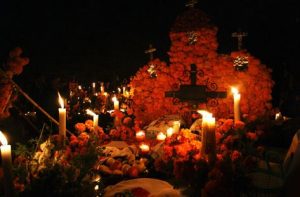 The result of this can be seen all over Mexico today, as many families celebrate All Saints Day and All Souls Day in compliance with the Catholic tradition on November 1st and 2nd. However, there are still many indigenous cultures in Mexico that, despite having complied with the dates of the Catholic tradition, continue to possess the same core beliefs as their ancestors. So significant is the resistance by these cultures to let go of their beliefs, that this event in Mexico has been recognized as part of Mexico’s Intangible Cultural Heritage by the United Nations Educational, Scientific and Cultural Organization (UNESCO).
The result of this can be seen all over Mexico today, as many families celebrate All Saints Day and All Souls Day in compliance with the Catholic tradition on November 1st and 2nd. However, there are still many indigenous cultures in Mexico that, despite having complied with the dates of the Catholic tradition, continue to possess the same core beliefs as their ancestors. So significant is the resistance by these cultures to let go of their beliefs, that this event in Mexico has been recognized as part of Mexico’s Intangible Cultural Heritage by the United Nations Educational, Scientific and Cultural Organization (UNESCO).
One of the most interesting aspects of the traditional celebrations of the dead in Mexico is that they are just 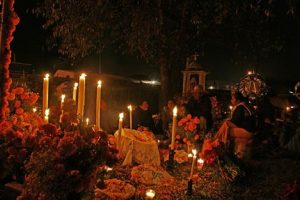 that, celebrations. This is generally not a time to be sad or mourn lost loved ones, but a time to be with them again for one night, and nourish them with those things they enjoyed during life on earth, particularly their favourite foods and drinks. Some of the most traditional and extravagant of these celebrations can be seen today in the Lake Pátzcuaro region of Michoacán and in and around Oaxaca City.
that, celebrations. This is generally not a time to be sad or mourn lost loved ones, but a time to be with them again for one night, and nourish them with those things they enjoyed during life on earth, particularly their favourite foods and drinks. Some of the most traditional and extravagant of these celebrations can be seen today in the Lake Pátzcuaro region of Michoacán and in and around Oaxaca City.
For the indigenous people of the Lake Pátzcuaro region, the Purépecha or Tarascas, the time of year in which they celebrate their dead actually coincides with their ancestral traditions. The Purépecha, as do many other cultures, attribute great signifi-cance to their agricultural calendar, and with maize being one of the most important crops, its harvest between the months of October to December is an incredibly important time. It 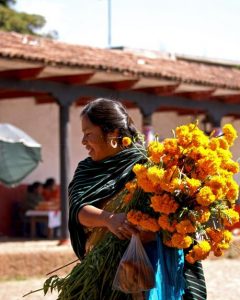 is thought, therefore, that their preHispanic celebrations took place during these months, and it is no coincidence to today’s Purépecha, that the monarch butterflies begin to return to Michoacán during this period. The arrival of these majestic creatures during this special time represents the souls of their lost loved ones returning to be with them once more.
is thought, therefore, that their preHispanic celebrations took place during these months, and it is no coincidence to today’s Purépecha, that the monarch butterflies begin to return to Michoacán during this period. The arrival of these majestic creatures during this special time represents the souls of their lost loved ones returning to be with them once more.
The scene you will find in the Lake Pátzcuaro region today is one of vibrant colours and a lively atmosphere with music, food and drink. Graveyards are covered with yellow marigolds (cempasúchil or cempazúchitl), which have been part of the tra-dition since pre-Columbian times and are considered the flower of the dead.
You will also see baby’s breath, coxcombs, white amaryllis and wild purple orchids, which are considered the flowers of the souls. Skulls are also used to decorate gravestones, but these days they are made of sugar! Come nightfall, families gather in the graveyards by candle light and enjoy the company of their lost loved ones once again. This is a truly amazing experience, which even the most cynical amongst us cannot help being touched by.
I am fortunate enough to travel to this area of Mexico year after year with groups of people who are interested in learning more about Mexico’s culture, history and nature. Using local guides, we aim to enable respectful interactions between tourists and locals through our series of well-planned tours.
The dates for our Day of the Dead trip each year are October 31st to November 3rd.
Our other tours to Michoacán include Morelia and the Monarch Butterflies, and La Ruta de Don Vasco (the Highlights of Mi-choacán). These trips are operated between the months of January and March and you can get dates and itineraries on our website: www.mex-ecotours.com, or by emailing us: info@mex-ecotours.com.
Download the full edition or view it online




